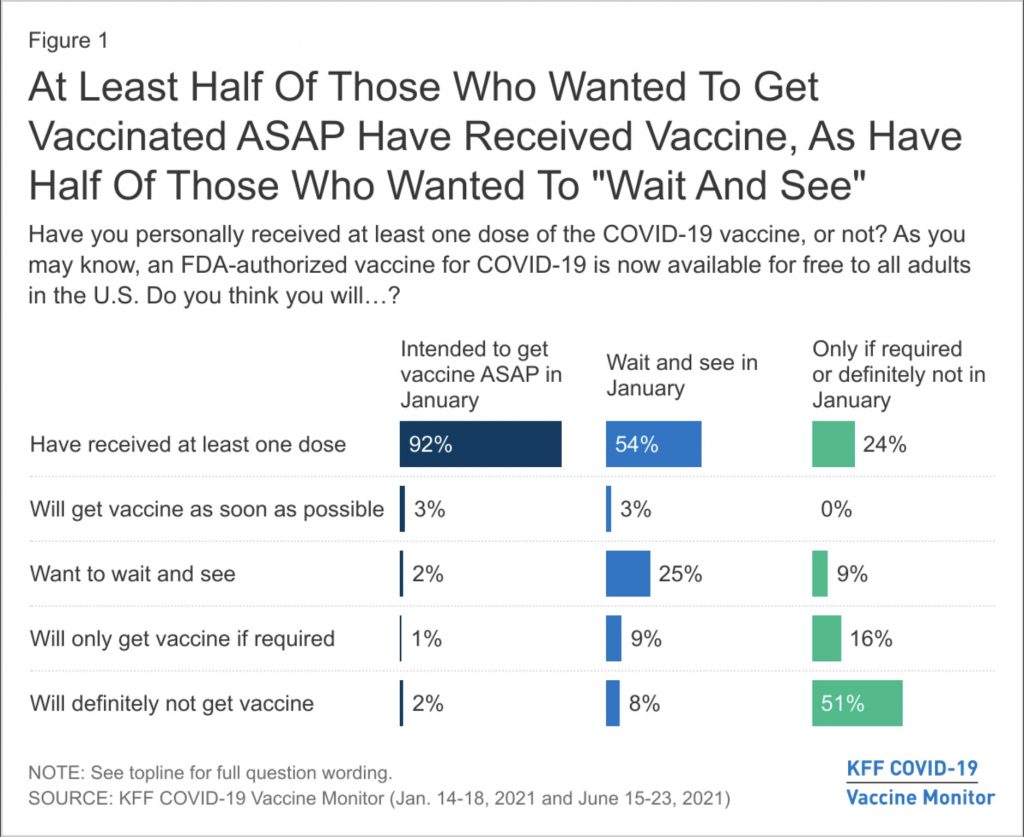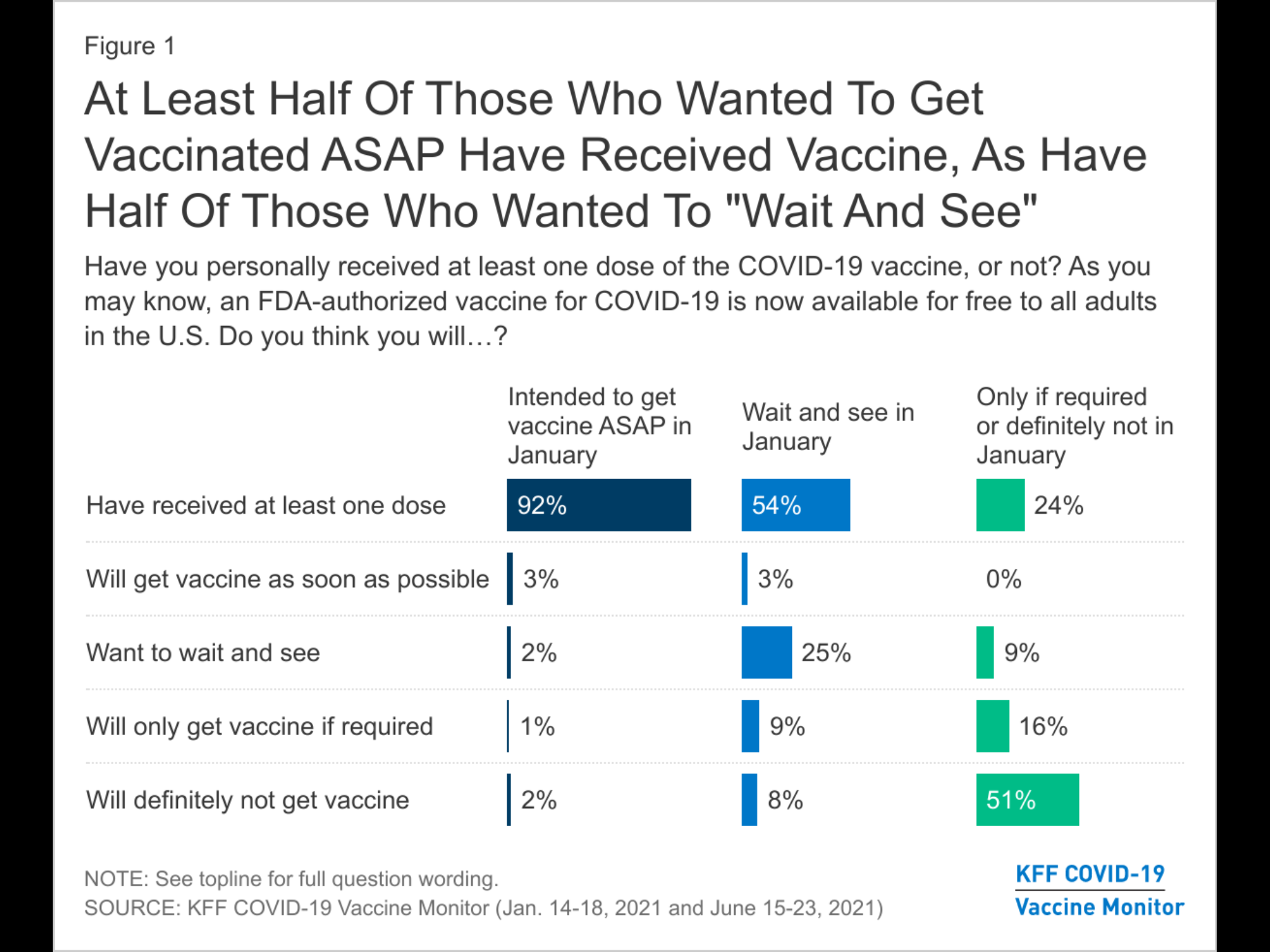This article looks at tracking vaccine hesitancy. And this is key for supporting health messages.
Specifically, this article is on recent findings of an important survey by the Kaisier Foundation. They are a nonprofit organization with a focus on major health care issues. Also, they support this effort by conducting in-depth studies.
With the rollout of COVID-19 vaccines, they wanted to better understand vaccine hesitancy. Thus, they ran a survey with a nationally representative sample of adults.
In it, they asked survey participants open-ended questions. Then they recorded the responses. In fact, they summarize the project as:
The KFF COVID-19 Vaccine Monitor is an ongoing research project tracking the public’s attitudes and experiences with COVID-19 vaccinations. Using a combination of surveys and qualitative research, this project tracks the dynamic nature of public opinion as vaccine development and distribution unfold, including vaccine confidence and hesitancy, trusted messengers and messages, as well as the public’s experiences with vaccination.

Key Findings
The first part of the survey was in January, 2021. Then six months later, they interviewed the same participants again. Here are the key takeaways:
A new KFF COVID-19 Vaccine Monitor report finds that people who were initially hesitant to get a vaccine in January but ultimately did so often say that they were influenced by others.
The report features a second round of interviews. More, they let six months pass before surveying them again. The follow up survey assesses whether or not they got the vaccine, their motivations, and and how they felt about them. It finds:
- (50%) initially planned on getting vaccinated as soon as possible or had already received at least one dose.
- Today, 2/3 have been vaccinated, including the vast majority (92%) of those who had planned to get vaccinated “as soon as possible”
- More, (54%) of those who wanted to “wait and see” are now vaccinated.
- However, (76%) of those who previously said they would get vaccinated “only if required” or would “definitely not” vaccine remain unvaccinated.
Those Who Changed their Minds
This is a key part of the report. And goes directly to the heart of our mandate.
The report also looks at individuals who were at first hesitant to get it, but did eventually. This data are critical in understanding health messages, too.
The survey found that only (21%) of all adults are now vaccinated after: expressing some level of hesitation.
Of this small group that were vaccinated, the survey looked at their motivation for the change:
- (25%) were motivated by seeing others get vaccinated without serious side effects
- (11%) were motivated by conversations with their personal doctors
- (9%) were motivated by the easing of restrictions for those vaccinated
- (8%) were motivated by pressure from friends and family
- (3%) were motivated by safely concerns in visiting other family members
Thus, seeing first-hand the benefits or hearing about them directly from experts was the largest factor. More, this supports our mandate.
And overall, the study found that a strong motivator is being able to safely see their family and friends.
Increasing Vaccinations
Tracking vaccine hesitancy is key to unlocking new communication strategies. Surprisingly, many who were initially hesitant but open to it, remain unvaccinated. Thus, there is still work to do.
Vaccines are Key
COVID-19 is a vaccine-preventable disease. More, everyone 12 and older in the United States can now get a free vaccine regardless of their immigration or health insurance status.
Moreover, they are safe and effective. Also, while some “breakthrough cases” do occur, vaccines substantially curb the symptoms.
Additionally, here are our key health messages on vaccines:
Vaccines Protect the Person Receiving it
Vaccines help to protect us from the virus. More, you are considered fully vaccinated two weeks after completing your second dose.
Vaccine Protect Others, too
Vaccines also protect others. More, it is important to remember that some cannot receive it, including children. Also you can be infected with it but show no symptoms, but still can spread it to others.
Please get vaccinated. And encourage others, too.
Previous Infection will not Protect you
If you previously had the virus, you still would need the shot. And here is why.
First, it is unclear how long immunity lasts. We wrote several articles documenting reinfection. And that is because there are new strains. More, viruses mutate. Thus, the strains currently being spread are different from earlier strains. So even if you had it, you can get it again.
Second, it protects others. Early evidence shows vaccinated individuals are less likely to spread the virus to others. And remember, not everyone is eligible to receive it.
How to get Vaccinated
There are several options, and the shot is available in many stores and clinics. Here are some methods:
Graph from KFF Report

